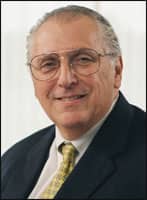by Christopher Piehler
The immediate past president of the AAO talks about how changes in the Children’s State Health Insurance Program could affect your practice
 |
| Raymond George, Sr, DMD |
Orthodontic Products: How will the recent extension of the SCHIP program affect orthodontists?
Raymond George, Sr, DMD: It might mean a slight increase in patients that have cleft palate and dentofacial deformities (it is my understanding that SCHIP would pay for their orthodontic treatment), but I’m not so sure we’re going to see a huge increase at orthdontic practices through the SCHIP program.
OP: Why is that?
George: Because of all the state differences in the SCHIP programs. I think most states will concentrate on the medically necessary treatment first.
I think [the extension of SCHIP] can adversely affect orthodontic patients in that, since they have increased the level that they are going to cover now, going to a higher percentage of the poverty level, if families are now eligible to be covered under SCHIP and they have a good indemnity plan now, I think they’ll tend to drop the indemnity plan and switch over to SCHIP.
The biggest deterrent to orthodontists’ accepting cases that are publicly funded is the level of reimbursement. For example, in Rhode Island, they pay less than your overhead to treat the case. Many of us have taken cases over the years and would almost prefer to treat them for free than to have your staff have to go through all the trouble of having to collect from the state.
Who do you go to when the patient isn’t cooperating with their treatment and their appointments? Do you go to a social worker? They’re so busy that they can’t effect any change in patient’s attitudes and actions.
SCHIP is going to be funded through the state, and unless the reimbursements are at the level where you can at least cover your expenses, it’s going to be very difficult to accept those patients.
OP: So what then happens to those patients?
George: The best way to get access to care is to make sure that all the providers are adequately reimbursed and then they’ll take all those patients and you don’t have a problem. What I would not want to see the government do is put the burden on the profession to solve the access-to-care issue.
To the best of my knowledge, when states have raised reimbursement to an adequate level, there is an increase in practitioners taking those patients.
OP: What is the process by which reimbursement levels get set?
George: If you ask me about medical assistance in Rhode Island, I can tell you that the state sets the reimbursement levels and I can tell you that, when I owned a practice and was really up on what the fees were, it would amaze me that it wouldn’t come close to what it cost to treat the case.
Since they’ve raised the poverty level that the states will accept, a lot of those people are covered by indemnity plans which pay an adequate amount of money, and then the patient has to kick in some money on top of that. Orthodontics is usually a copay, where even if you have an insurance plan, it pays part of the fee and the family pays part of the fee.
And that’s good for us, and it’s good for the patient in a way. The reason I say that is, if somebody isn’t paying anything for treatment, a lot of times that’s what value they put on treatment, and to get good orthodontic results, you need patient cooperation. The patient has to see some value in what they’re getting.
One of the things I’ve taken for the AAO is that I wanted to see if we could develop our own access-to-care program, too.
OP: And what would that entail?
George: There are some existing access-to-care programs. There’s Donated Dental Services, and they treat handicapped children and adults. They do fillings and whatever they need. I’m hoping that the AAO can partner with them to develop an orthodontic program through which our members can do cases pro bono. We all do pro bono work. Orthodontists have great hearts and they do a lot of it, but now we want to see if we can get it really well organized to treat the population that needs to be treated. We have a tentative agreement with Donated Dental Services, and we may try a pilot program in five or six states to see if we can get this up and running.
We are a health care profession, and we have an obligation to the public to try to bring them the treatment they need. If some require pro bono treatment, then we should be part of that. We should be part of the solution.
|
To get more news and advice about the economic side of orthodontics, subscribe to our Money Matters e-newsletter. |
But the access-to-care issue, in my humble opinion, cannot be solved just by the government. It can’t be solved just by the profession. It can’t be solved just by the public or just by industry. It has to be a combination of all that. You can’t put it all on one group. We are absolutely looking at the way in which AAO members can help with the access-to-care issue in a more proactive way.
We just had about 100 orthodontists go to Washington to discuss issues, and many of them made Hill visits to talk to their Congressmen about what we are attempting to do and where we are in the access-to-care issue.
The AAO realizes that there are only limited funds, so when we go to Washington to lobby, we are telling them, “Include in your health care programs medically necessary treatment.” That means primary dental care such as fillings and extraction and cleanings, but that should also include medically necessary orthodontic treatment.
Raymond George, Sr, DMD, is the immediate past president of the AAO. He can be reached at










